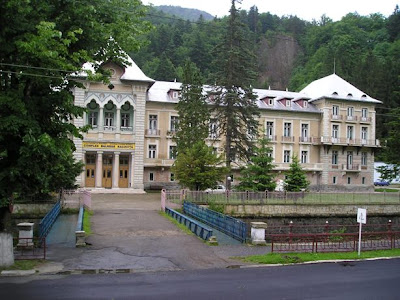

The present town of Vatra Dornei developed around the former hamlet of Dorna pe Giumalău, known by the Romans as Durnacum, then mentioned in a document of 1600. The site soon grew in importance among the neighboring villages, becoming truly significant once the authorities officially confirmed the curing properties of its mineral waters, at the end of the 18th century (chemist Hacquette de Nürnberg in 1790, doctor Ignatziu Plusch in 1805 and 1810).

The town is well known as an all-season health resort of national importance having the climate of an intramontane depression: no strong winds, cool summers (July average temperature 15.2°C) and cold winters (January average under -6°C). The annual average temperature is of 5.2°C and the precipitation averages 800 mm annually (more abundant in the May-August period).

The spa’s healing properties that have made it famous across the world include the tonic-stimulative climate, the strongly negative ionized air, free of dust and allergens and rich in resinous aerosols, the springs of carbonated, ferruginous, slightly bicarbonated, sodic, calcic, magnesian, hypotonic mineral waters and the peat mud (brought here from Poiana Stampei). Tourists come in Vatra Dornei to treat their cardiovascular affections and rheumatism, to rest, practice winter sports or just to have a good time. The spectacular landscape also allows for numerous leisure activities – walking, horse-riding, river-rafting, mountaineering.

Vatra Dornei is also known a winter sports resort with its many slopes and ski lifts. Black Hill (1.300 m) and Runc Hill have tracks and slopes for winter sports and a chair lift of 3200m. Points of Interest: the natural park in the resort, famed for its many squirrels and for the brass band concerts given here in summer; the chalet on Runc Hill; the Hunting and Natural Sciences Museum; the Bukovina Ethnographic Museum, etc. If you have the chance to visit Vatra Dornei, it is certainly worth the trip!
















